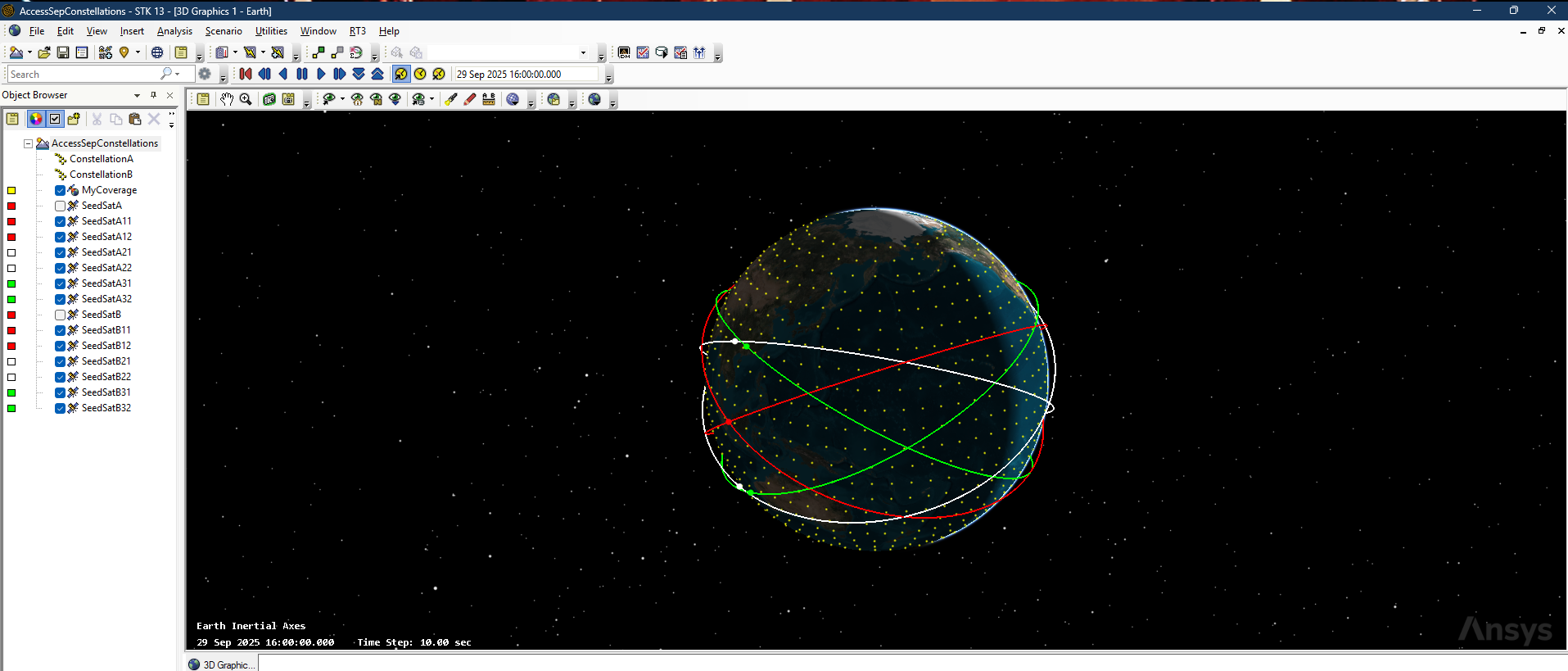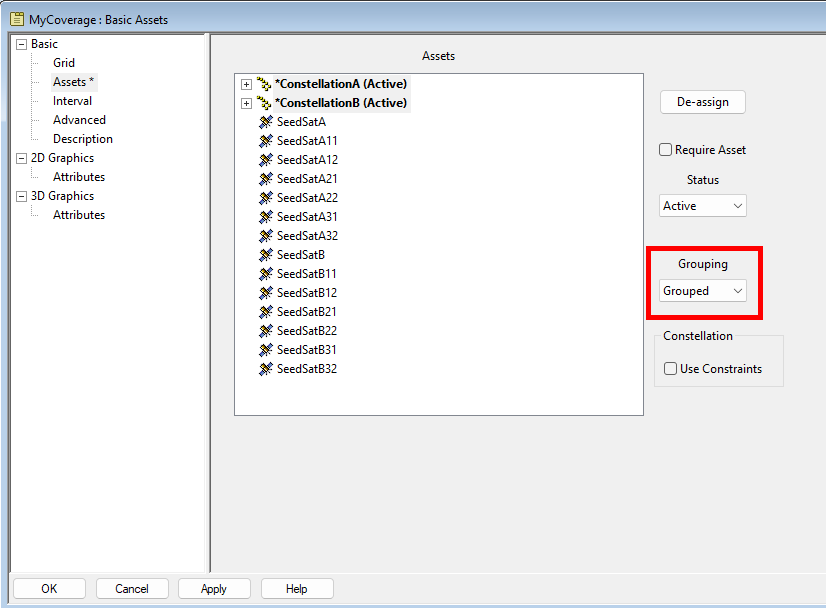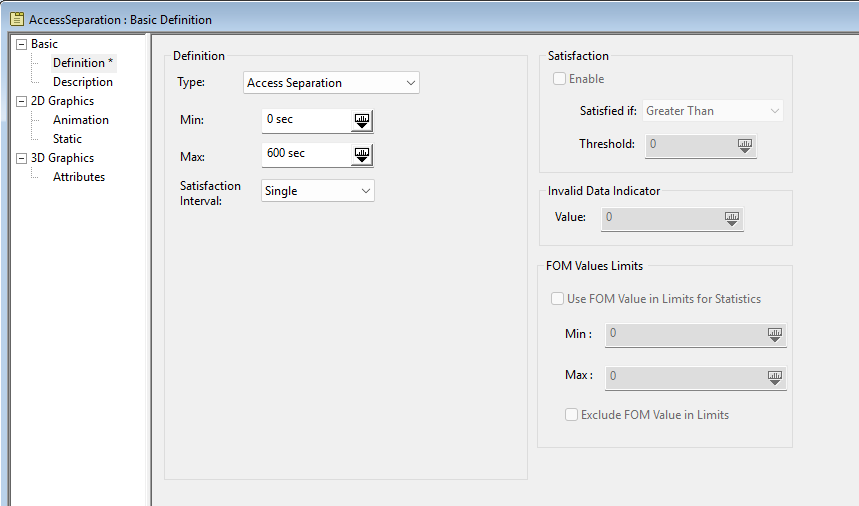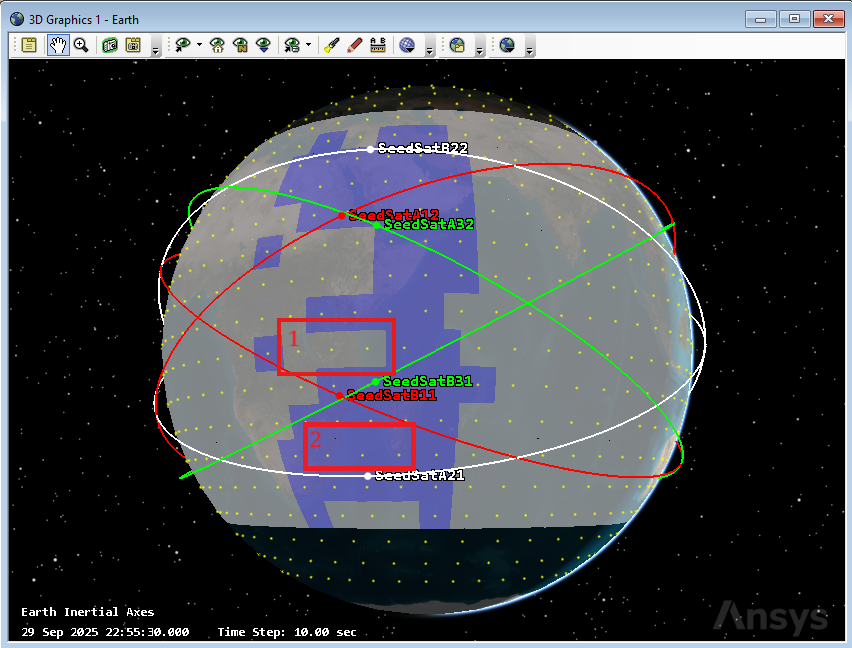When using constellations, you can either treat them as a group of independent objects or as a full set. In this case, you will use the "full set" approach.
The goal of this analysis is to restrict coverage satisfaction to times when the constellations each make access within a predetermined interval. You will try out the simplest example of a scenario containing only two constellations.
Scenario setup
Start by creating a new scenario and adding a Coverage Definition object. Shown below is the default Coverage Definition object, with latitude bounded between -60° and 70°. Then you can create some basic Constellation objects. The ones shown here are made up of satellites created through the Walker tool. The seed satellites are at the default 28.5° inclination and their RAAN differ by 180°.

Now that the basic object properties are defined, you can assign the constellations as assets and create a new Figure of Merit for MyCoverage. First, assign assets as shown below.

The most significant aspect of this is that you ensure "Grouped" is selected for each constellation. This simple property will determine whether the constellation's components are seen as independent assets or if the coverage definition considers the entire constellation to be an asset.
When defining your Figure of Merit, set the type to "Access Separation," which enables you to define the minimum and maximum time between each asset's access. The setup here denotes that the two constellations must see the same point within 10 minutes (600 seconds) of each other, with no effective minimum (access can be concurrent).

Analysis
Once you compute your coverage and set up your Figure of Merit graphic, you can confirm that expected constraints are being used. For example, with static satisfaction set to white and animation satisfaction set to blue, you can see here that crossovers by satellites from ConstellationB do not satisfy the constraint, but crossovers between the two constellations do.

Comparing region 1 and region 2:
• Region 1 has access to both SeedSatB11 and SeedSatB31, but it is not satisfied since they are part of the same asset.
• Region 2 has access to both SeedSatA21 and SeedSatB11, and it is satisfied since they are grouped with different assets.
You can expand this to include more than two constellations and even use the "Require Asset" property to ensure specific, or even all, constellations acquire access with the coverage points.
